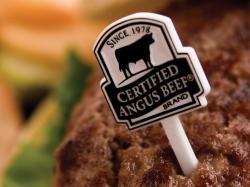Did You Know.. How Cattle Prices Affect Steak, Burger Prices
October 8, 2014 | 4 min to read

If your crystal ball suggested eight years ago we would be selling $1.60 fed cattle and $2.50 calves this year, I bet you would have thought the forecasting equipment had a serious problem.
Well, here we are in 2014 selling fed cattle for more than $2,000 per head and calves off the cow for well over $1,000/head… who would have thought?
And what about the next eight years… who knows? At a recent conference, Cattle-Fax CEO Randy Blach said we are in a new price era and demand continues to look encouraging.
Who will determine those future prices? Like always, the beef consumers. You know they’ve been touched by the price hikes. But, what I bet you did not know is how the cattle price changes have affected the cost of a 10-oz. steak or your quarter-pound burger.
As most are aware, the foodservice industry plays a key role in beef sales by taking the primal and cutting the 8-, 10- or 12-oz. steaks for the restaurant menus. In our calculations (See Table), we have only used the retail primal or ground beef cost, not adding any foodservice costs for portion cutting or patty forming. So remember, we are only looking at the change in ingredient cost.
In September 2006, fed cattle traded for $89.26 per hundredweight (cwt.), which in September 2010, had increased 9.1% to $97.41/cwt. A few weeks ago, this past September, cattle prices were $157.68/lb. or a 76.7% increase over 2006. Yes, a big change!
So you expect the cost of a beef serving to change the same, right? Well, that is not how it works.
Starting in 2007, we moved into an economic recession in which steak prices struggled, so even four years later in 2010, a primal ribeye was selling for 5.8% less than it did in 2006.
Slowly the middle meats (ribeyes, tenders and strips) are improving, but comparing 2014 to 2006 prices, a ribeye primal is still only 28.2% higher. Using a 20% trimming shrinkage, this translates into a 10-oz. ribeye cost (ingredients only) of $5.67 today compared to $4.42 in 2006. A change, yes, but not nearly proportional to the change in cattle prices.
So what is changing? The answer is easy: ground beef prices. That’s why analysts today suggest ground beef is an increasingly important price driver. In 2006, the “Yellow Sheet” price of ground beef was $1.23/lb., but in 2014 that price increased to $2.80/lb. for an impressive 127.6% increase in cost. Yes, a $157 fat cattle market – in concert with the decline in cull-cow beef supplies – has increased the cost of your hamburger.
What is the driver behind this increase? The obvious answer is consumers like ground beef and the flexibility it allows to fit numerous meal types. Couple that with fewer cull cows to grind and a fed-cattle population the lowest since the 1950s and the price per pound goes up.
Because grinds from the fed cattle that qualify are an important part of Certified Angus Beef ® (CAB®) brand sales, the advent of companies like Smashburger has impacted the premium grind market as well. Today, Choice and Select grinds are equal at the $2.66/lb. price, but CAB grinds sell for $2.79/lb. or 5% higher, which helps create the CAB grid premiums cattlemen enjoy today.
Effect of cattle price change on a steak or ground beef serving cost
|
|
|
|
|
|
|
|
Serving Cost |
|||
|
|
Nebraska Fed Cattle* Price |
% Change from 2006 |
Choice Ribeye Primal** |
% Change from 2006 |
Ground Chuck** per lb. |
% Change from 2006 |
10 oz. Steak*** |
Quarter lb. Burger |
||
|
Sept 15, 2006 |
$89.26 |
— |
$5.67 |
— |
$1.23 |
— |
$4.42 |
30.8¢ |
||
|
Sept 15, 2010 |
$97.41 |
+9.1% |
$5.34 |
-5.8% |
$1.55 |
+26.0% |
$4.17 |
38.7¢ |
||
|
Sept 15, 2014 |
$157.68 |
+76.7% |
$7.27 |
+28.2% |
$2.80 |
+127.6% |
$5.67 |
70.0¢ |
||
*USDA 3-week average
**Urner-Barry “Yellow Sheet” Weekly Prices
***To determine steak price, the Choice ribeye primal was adjusted to an expected 80% yield
Source: Certified Angus Beef LLC
